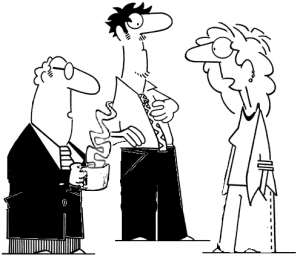By Cindy Vallance @cdvallance
Simon Black’s latest blog highlighted key principles for how groups might work better. His first principle – ‘design team work carefully’ will provide a strong foundation for success in maintaining and improving team effectiveness. But how? There are a range of techniques that can be used to assist in designing team work.
A useful starting point is role analysis. Role analysis? Isn’t this the job of Human Resources? Yes, often job descriptions are created as part of a central HR function. But work, and especially work with others, is never as simple as following a printed job description that more often than not is created at a single point of time and then simply filed away.
It is all too often the case that mutual demands, expectations and obligations of interdependent team members are never openly discussed. Each individual may wonder why others do not seem to be doing what they are ‘supposed’ to be doing even though all individuals are performing as they think they should.
The technique of role analysis can be effectively used to help teams and groups work together. How does it work? Individuals first each analyse their own role in the group. A few questions to ask:
What is the rationale for the role – why does it exist?
What is the role there to achieve?
What are the specific duties of the role?
What are the expected behaviours of the role?
How does the role contribute to the achievement of the group’s goals?
How is the role related to other roles in the group?
The next step is for individuals to explain their understanding of their role within the group. Other group members can then share their expectations of the role. Expectations and obligations can be modified and agreed through discussion so that all reach a common understanding.
At the conclusion of this process, the individual holding the role assumes responsibility for preparing a brief written summary (a role profile) consisting of the activities of the role, the obligations of the role to the other roles and the expectations of the role from the other roles. Sharing this summary back with the group is the final step.
Each individual then ends up with a better understanding of what their own role is, what the perceptions and expectations of others are, and how all roles fit together. Role profiles are not static but can be modified as needs change over time.
Effective use of the technique of role analysis can reduce role ambiguity (am I supposed to be doing that or is it your job?), role conflicts and misunderstandings. The technique can also help ensure commitment to the individual roles that have been collectively and collaboratively defined.
Next time, another technique for group working…





